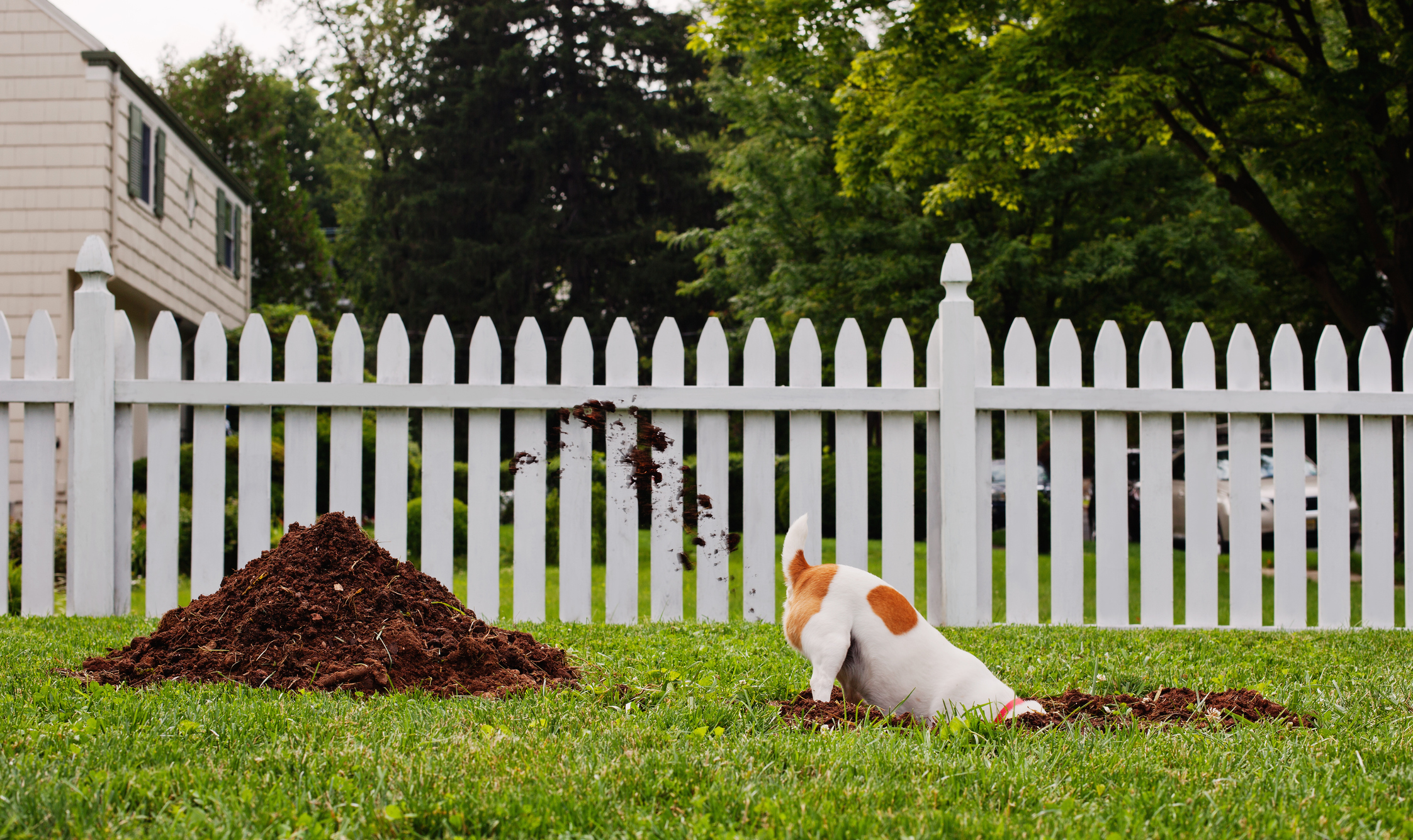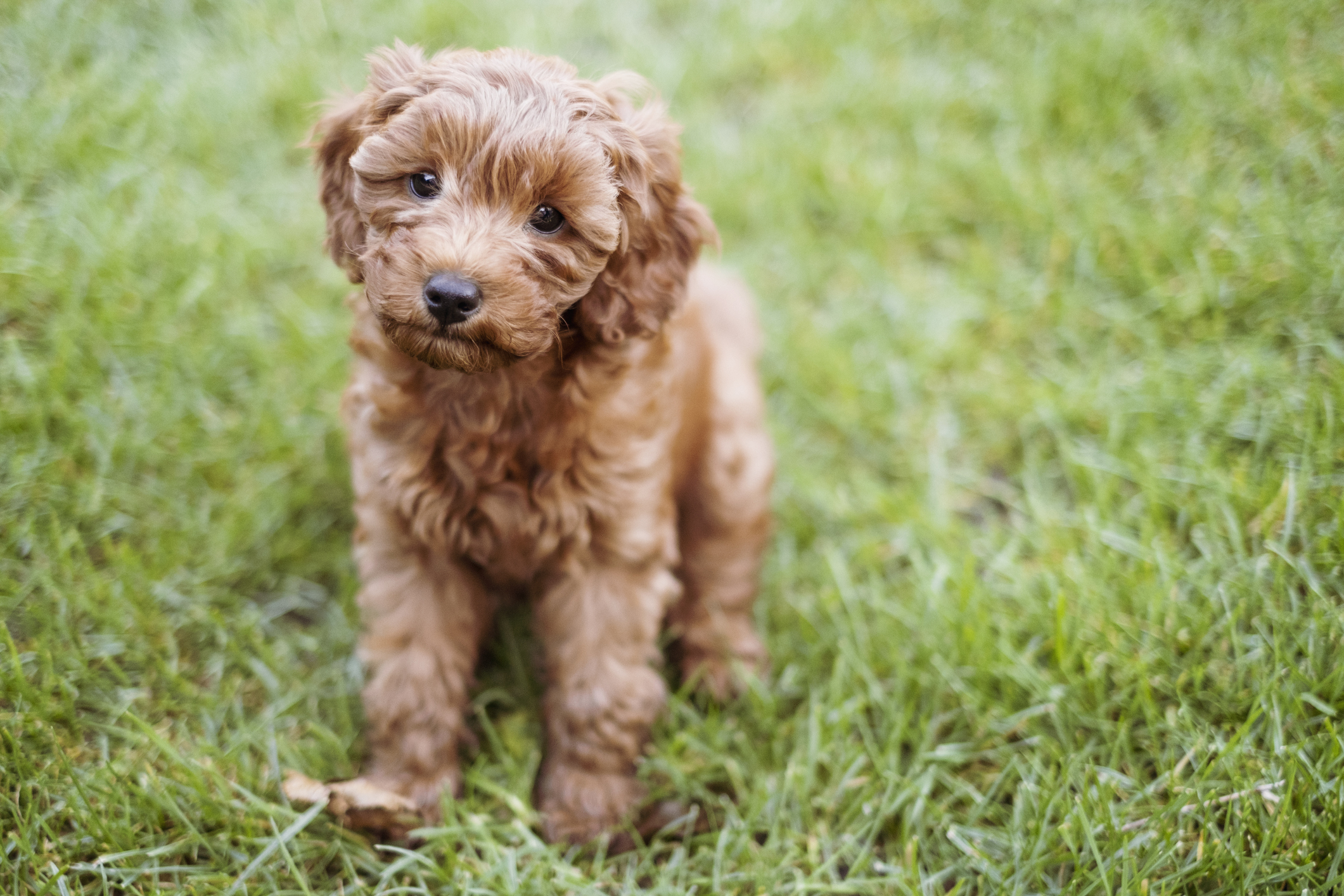How to stop a dog destroying your lawn
Ben Randall fields a question about how to stop a pooch with a penchant for digging holes in its owner's prized garden.


Keeping a nice lawn is part of the joy of owning a house with a garden. And enjoying that garden with the whole family — including your pets — is also part of the fun. So when your pets decide to start destroying that lawn, it's disheartening in the extreme.
That's the situation faced by our reader this week, who wrote to me at paws-for-thought@futurenet.com to tell me about his young dog has recently developed a habit which his owner has been struggling to break.
Dear Ben, I am regular reader of Country Life but this is the first time I've written in with a question. We live in London with quite a large garden for the area. We own two Scottish Terriers, one 13 and one nearly two years. We've never had a problem with the older one but the younger has started digging the lawn of which I have been very proud. The trouble is she scrapes it as well, so you can’t even put the grass back. I have tried sprinkling the area with chilli and pet sprays to deter her from the area, and have even seeded the spots where she's been digging and covered them with mesh. Nothing works; she just digs in another area. What can I do? Will she grow out of it? Thank you for any guidance. — S.D., via e-mail
Many thanks for your letter – I'm really pleased you’re enjoying Country Life's articles, and sorry to hear the trouble your young dog is giving you. It is something I've come across several times while developing my Beggarbush (BG) methods, and I'm sure I can help you nip it in the bud.
And just to be clear, while she may grow out of it naturally this isn't a problem anyone should ignore. Particularly given the fact that you live in London, you never know quite what a dog can find digging up the soil: not just mud, stones and plants, but also old bits of broken pots, shards of glass or wires. Chewing or eating on any of this could make your dog really unwell.

How to stop your dog destroying the garden
Step 1: Stop the dog from having unsupervised access to the garden
You don't mention this specifically in your message, but I’m assuming that your dog is digging up the lawn whilst unsupervised in the garden, perhaps when you let her out to exercise or go to the toilet. If that's the case, it has to stop: until this problem is solved, I most definitely wouldn’t let the dog in the garden area unsupervised. It'll only compound the problem.
It won't be forever, but you won't stop her digging if she gets free time each day to carry on doing so. Remember: it’s your garden, you can control who comes and goes, and when, and you can use it as you want to practice and repeat the training until the dog understands.
Step 2: Work on toilet training with your dog
You'll most likely let your dogs out to go to the toilet multiple times a day in the garden; so let’s carry on doing that while instilling toilet training exercises. Ask both of them to come to the door, teach them to sit patiently, then individually call them to the edge of the grass before finally letting them go to the toilet.
Exquisite houses, the beauty of Nature, and how to get the most from your life, straight to your inbox.
Stand and supervise throughout, and when each has finished, call them back before going back in to the house. You'll instil patience and discipline doing this, and you dog will get used to the idea that going out to do their business doesn't mean it's playtime and open season for digging.
Step 3: Allow the dog back in the garden, and be ready with the 'leave' command when you catch her in the act
When you head out into the garden for the dogs to play, make sure you go with them — and the moment that any digging starts, give a firm, clear 'leave' command. I've written about the importance of this crucial command many times, and this is a perfect example of how useful it can be.
Once you're sure she responds to it, we can then start using it for this negative behaviour in the garden as and when it happens.
So take the dogs out for a bit of exercise and some playtime while you stand watching — and the moment the dog starts to dig, walk towards her and give that leave command. Wait for her to stop what she was doing and go back to playing, but don't let your guard down. Instead, stand back and wait for your dog to make the same mistake again, allowing you once more to step in.
This is the key part of the training. You can practice this over and over again until your dog understands that you’re determined to stop this behaviour — believe me, she’ll soon learn she’s not allowed to do this.
One thing to remember, though: as ever with the 'leave' command, don’t bribe the dog every time she stops digging. If you do that you'll only teach her that she simply needs to start digging a hole in order for your to call her over and give her a treat.
Instead, after every few positive ‘leave’ commands, give her calm praise and attention, then walk her back in the house. It'll keep your dog super-happy and positive.
Step 4: Lower the level of supervisions while outside — but keep an eye out
The next step is to be out in the garden and have the dogs with you, while you're working in the garden and not fully supervising them. Personally I like to have a bed or area where I'll ask them to sit, placing a reward on the floor in front of them, while I do some pruning, watering or tidying. Then after a few minutes I give the release command to let the dogs have their reward for their patience. While all this is happening, listen out for any signs of your dog coming out to dig up the lawn and be ready to step in.
If you’re spending longer in the garden — once the weather picks up, that is! — then ask them to sit in a safe area away from the lawn, then give them their favourite antler, pig's ear or bone to chew to keep them occupied while you're not focused on them. Again, if you catch a glimpse or hear the dog start to run out on the lawn and start causing trouble, it's time to step in again — and don't be afraid to go back a step or two if you feel you need to. I don't think you will, though: after a while your dog's digging will be no more.
For more detailed advice about Ben Randall’s positive, reward-based and proven BG training methods, one-to-one training sessions, residential training or five-star dog-boarding at his BGHQ in Herefordshire, telephone 01531 670960 or visit www.ledburylodgekennels.co.uk.
Ben also has a forthcoming book, 'How to Train Your Gundog, out in December. You can pre-order it here at £40.
For a free seven-day trial of the Gundog app, which costs £24.99 a month or £249.99 a year, visit www.gundog.app/trial.
